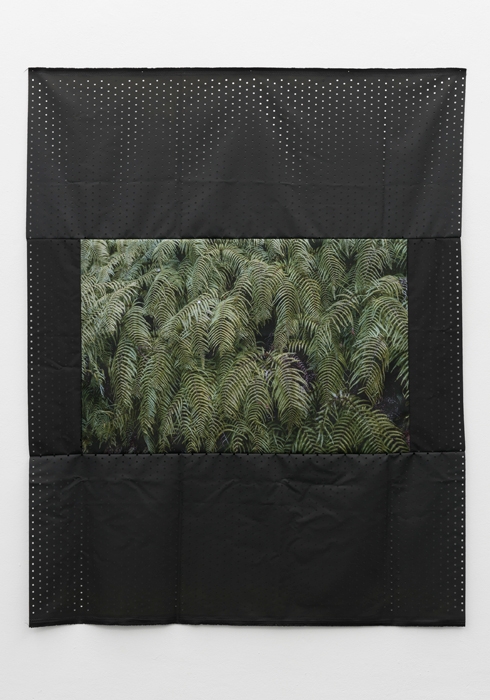The view of Japan from Europe or the US is mostly characterised by a lack of understanding concerning its completely different milieu: we like to poke our ‘long noses’ into it but inevitably end up coming adrift. Perhaps this is most beautifully portrayed through Bill Murray’s clumsy character in Sofia Coppola’s Lost in Translation (2003), when he attends a kado flower-arranging class with Japanese ladies. It is also especially true for photography, given the numerous photographers since Robert Capa and Henri Cartier- Bresson who have travelled Japan in order to readjust their gaze within this wholly disparate visual culture, thereby fostering a photographic Japonisme that has hardly been interested in understanding the culture portrayed.
Anne Pöhlmann’s exhibition Japan Diary, the result of a three-month artist’s residency in Kyoto, demonstrates awareness of this tradition, but at the same time wants to go beyond the productive utilisation of getting lost in the cultural gap. On their own, her photographs most likely would convey this naivety or cultural cluelessness. Yet the Dresden-born artist counters this by ingeniously interweaving her images with fabrics: the photographs, some printed on photo paper, others directly on textiles, are mounted on materials pinned straight onto the walls. Entry #03 ferns, Kiyomizu-dera (all works 2017–18), for instance, is a closeup of several ferns, exuding a contemplative mood. As an atmospheric picture, this photo would be nothing more than a clich.d reproduction of Japan’s oh-so-enchanted nature. But Pöhlmann has printed it on black cotton, introducing a minor chord into the image. In addition, the picture is hemmed in by a perforated, equally black rubberised cotton fabric – the one often used by Raf Simons – which both frames and expands the image. The fabric’s flowing materiality and sumptuous black colour correspond beautifully to the subject: the fern grove at the Buddhist temple Kiyomizu-dera is a memorial for love – which to our ears initially sounds like a contradiction.
Studying Pöhlmann’s work, one repeatedly encounters a question concerning the material fixation of the photographic image: the background that the image sinks into also descends into the image. Correspondingly, her photographic image – and she would probably say this is true of all photographs – cannot be divorced from its materiality. Rather, it merges with the fabrics, adding layers of meaning. The materials she uses are at the same time image carrier, frame and pictorial element, and the photographic image is by no means always the focal point of the individual works. But, in all fairness, it must be said that her preoccupation with the mutual interpenetration of image, printing process and carrier is much more serious than the obsession with printing of a generation of Postinternet artists.
The equal distribution of fabric and textile is nicely shown in Entry #01 horsetail. This almost rectangular fabric picture consists of two horizontal bands, the upper one made from mint turquoise microfibre, the lower from worn white velvet. Recessed into the latter is a photograph printed on cotton in the style of Rinko Kawauchi. It shows some strange objects in closeup (horsetails, according to the title) lying on a purple shimmering tarpaulin. Of course the photo portrays something Pöhlmann encountered in Japan, yet here it primarily depicts the texture of the tarpaulin as an insert into an otherwise abstract picture plane, adding another grid beside the fabrics and the printed image. This is significant because you cannot help but pay as much attention to the small details of the textiles, their folds, structures and patterns, as to the photographs of Zen gardens and garden gates. We notice the abundance of details on the fabrics and the photos, but fail to get behind their respective meanings, remaining on their – admittedly wonderful – surfaces. In this respect, Pöhlmann’s diaristic Japan photos and the textiles are analogous to each other. Fabrics are made to be worn, but first and foremost they serve to conceal. There is no better way of exhibiting the idea of a veil of incomprehension that traditionally covers the (photographic) eye of most Westerners in Japan.
Translated from the German by Kevin Kennedy
Anne Pöhlmann: Japan Diary at Clages, Cologne, 19 January – 24 February 2018
From the April 2018 issue of ArtReview
